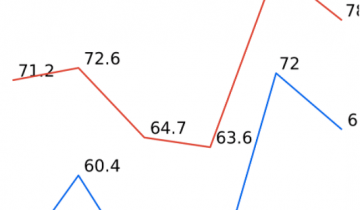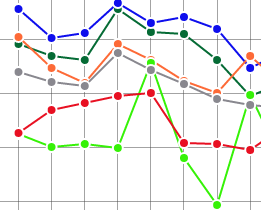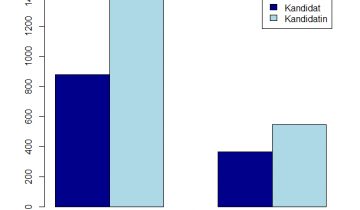The Food and Agriculture Organization of the UN (FAO) estimates that 1,6 billion tons of food is wasted worldwide every year with direct economic consequences of 750 billion dollars. In Europe, southern states generate the highest levels of food losses in households per person. The main reasons include inadequate package sizes, poor storage management and confusion about date labels best before and use by. Surprisingly however, food waste seems to be associated with neither prices for food, nor consumers‘ income. In order to avoid food losses generated by supermarkets, some governments are now implementing new strict policies.
Supermarkets in France with a footprint of 400 square metres or larger were recently banned from throwing away unsold food by law. Instead, they are required to donate food to charities or food banks. Similar laws have been passed in Belgium and prepared for example in Italy, the Czech Republic and Slovakia. The goal is clear – reduce losses of edible food, which just in the European Union reaches 88 million tons every year, costing the economy 143 billion euros.
The European Union considers wasting of edible food a serious problem and last year it adopted a target to halve the per capita food waste at the retail and consumer level by 2030. Yet, there is still lack of consensus on methodology on how food losses should be actually measured and therefore also lack of reliable data. The latest study by the European Parliament tried to solve this challenge and developed a dataset with comparable measures.
Southern states waste the most, eastern and northern European countries are more thrifty
According to the European Parliament study, Greece produces the most amount of food waste in households – every Greek wastes on average 141 kilograms of food every year, with a major part of that still edible. The highest amounts of food end up in the trash in southern European households. Besides Greece, Italy and Portugal also land in the top five „food wasting“ nations. One of the reasons might be that southern European cuisine contains a lot of fresh vegetables and products, which inevitably lead to more food waste. Eastern and northern European states on the other hand waste the least amount of food.
Considering the total amounts of food waste from production to consumption, the Netherlands appears on the top of the ranking with almost 400 kilograms of food waste per capita annually. It is followed by Greece, Spain and Italy.
Reliable data on current food losses in Switzerland are lacking. In 2012, WWF published a report based on research conducted at ETH Zurich and the University Basel, which estimated that every year one third of the food produced for Swiss consumption is wasted. This represents a loss of 320 kg of food per capita and year, which is a comparable result to Portugal and Denmark.
Food waste produced in EU households per capita (in kg/year)
Food waste produced in EU countries – from production to consumption (in kg/year)
(Data from the study „Technology options for feeding 10 billion people“ by European Parliament. Both maps created with Google Charts.)
Price for food does not affect food losses in households
The FAO estimates that in industrialized countries the highest levels of food losses occur during retail and consumption in households. A lot of food is also wasted during various agricultural processes. The food losses in agriculture are often not avoidable, they are however sometimes increased only by high standards for the visual appearance of food – carrots with triple heads do not get harvested and are directly plowed.
Surprisingly, food losses in households seem to be uncorrelated with the prices for food, income, savings, expenditures on food, share of expenditures on food or with the economic performance of the country. For example, even though countries with higher expenditures on food tend to experience slightly higher levels of food waste, this trend is not at all generalizable. In Finland of example, consumers spend more than 3000 dollars per year on food, which is above the European average, yet the food waste level is still moderate.
Food waste levels in EU countries in relation to price levels for food, expenditures on food, and disposable income
(Zoom in to see results for given countries. Data: The European Parliament, World Bank and Eurostat – i.e. Food waste, price levels for food, expenditures on food, disposable income. Created with R and Plot.ly.)
The reason for food losses in households? Lack of information
So what is it then that some consumers and countries respectively waste more edible food than others? Scholars argue that the main reason is lack of information on the part of the costumer. The research cited by the European Parliament has found the following reasons for avoidable food losses in households:
- Lack of planning / knowledge concerning food purchase and storage
- Impulse purchases (buying items that are not currently needed)
- Purchasing of new products that the consumer then “do not like”
- Inadequate package sizes (e.g. oversized ready to eat meals)
- Poor storage management (e.g. inadequate wrapping)
- Confusion about date labels (“best before”, “use by”)
- Lack of techniques and skills for food preparation
- Poor experience in planning meals
- Preparing oversized meals
- Lack of skills for recombining leftovers into new meals
According to FAO, fruits, vegetables and bakery are the categories of food, which get thrown away in households and could be easily avoided with smart planning. Meat and fish on contrary does not end up in trash so often.
On the way to food waste regulations
EU member states themselves are now trying to tackle the avoidable food losses. Interestingly, the states with highest levels of food waste are not always the pioneers in anti-food wasting policies. As mentioned, France tried a new approach with banning supermarkets from throwing away unsold food by law, inspiring other countries. Tax deductions for food donations are now possible in number of EU states such as Germany, Italy or Portugal.
In other EU countries, private actors take the initiative: for example in Denmark, a new „food waste“ supermarket opened in March 2016. It sells products past their sell-by-date but perfectly edible at prices 30 to 50 per cent cheaper than in usual supermarkets. The stores success in the first few months of operation suggests widespread demand for such approaches.
—
Author: Petra Parikova / petra.parikova@uzh.ch / 12-733-275 / 22.5.2016
Dozenten: Prof. Dr. Fabrizio Gilardi, Dr. Michael Hermann und Dr. des. Bruno Wueest
Word count: 1000 (incl. the lead)



